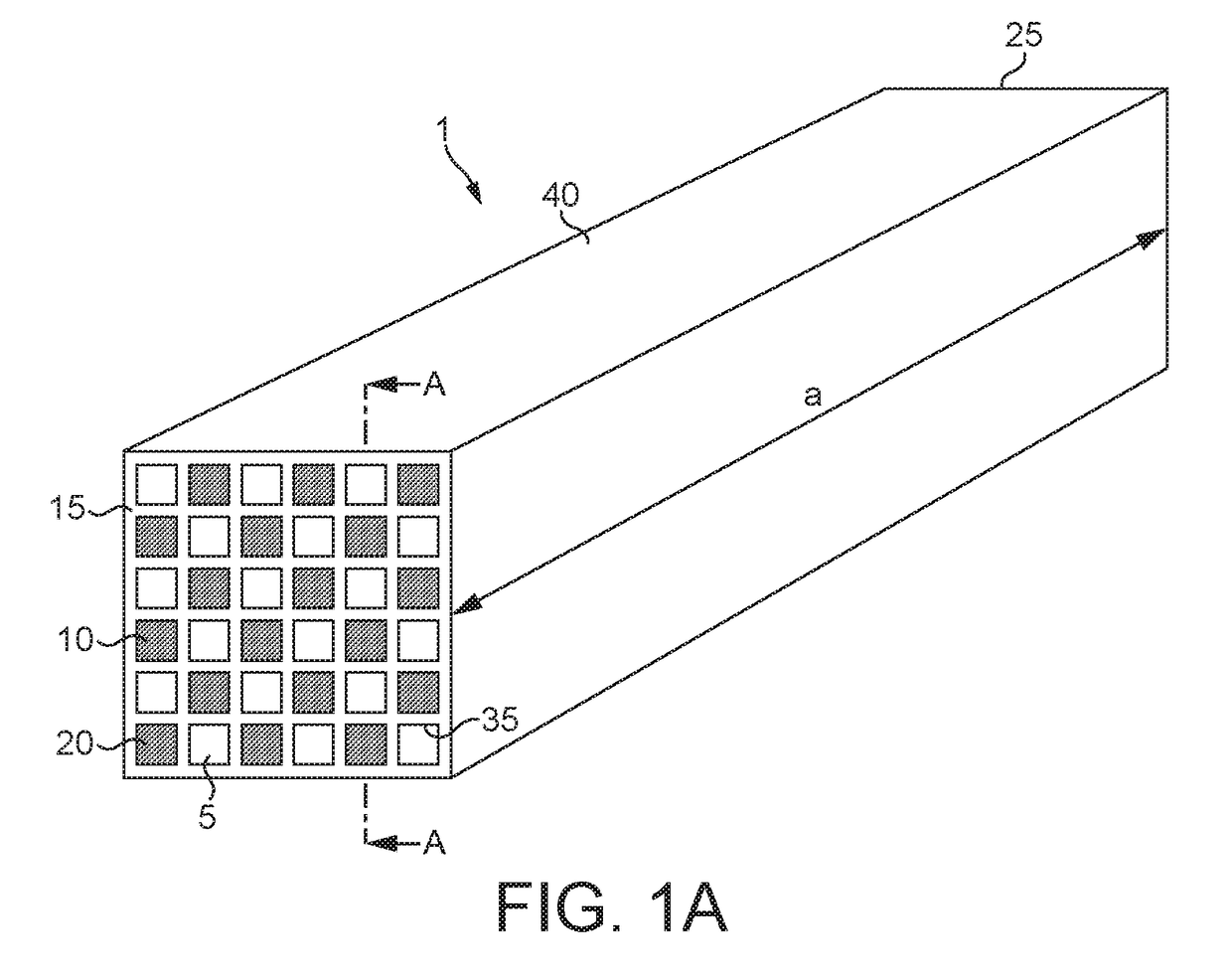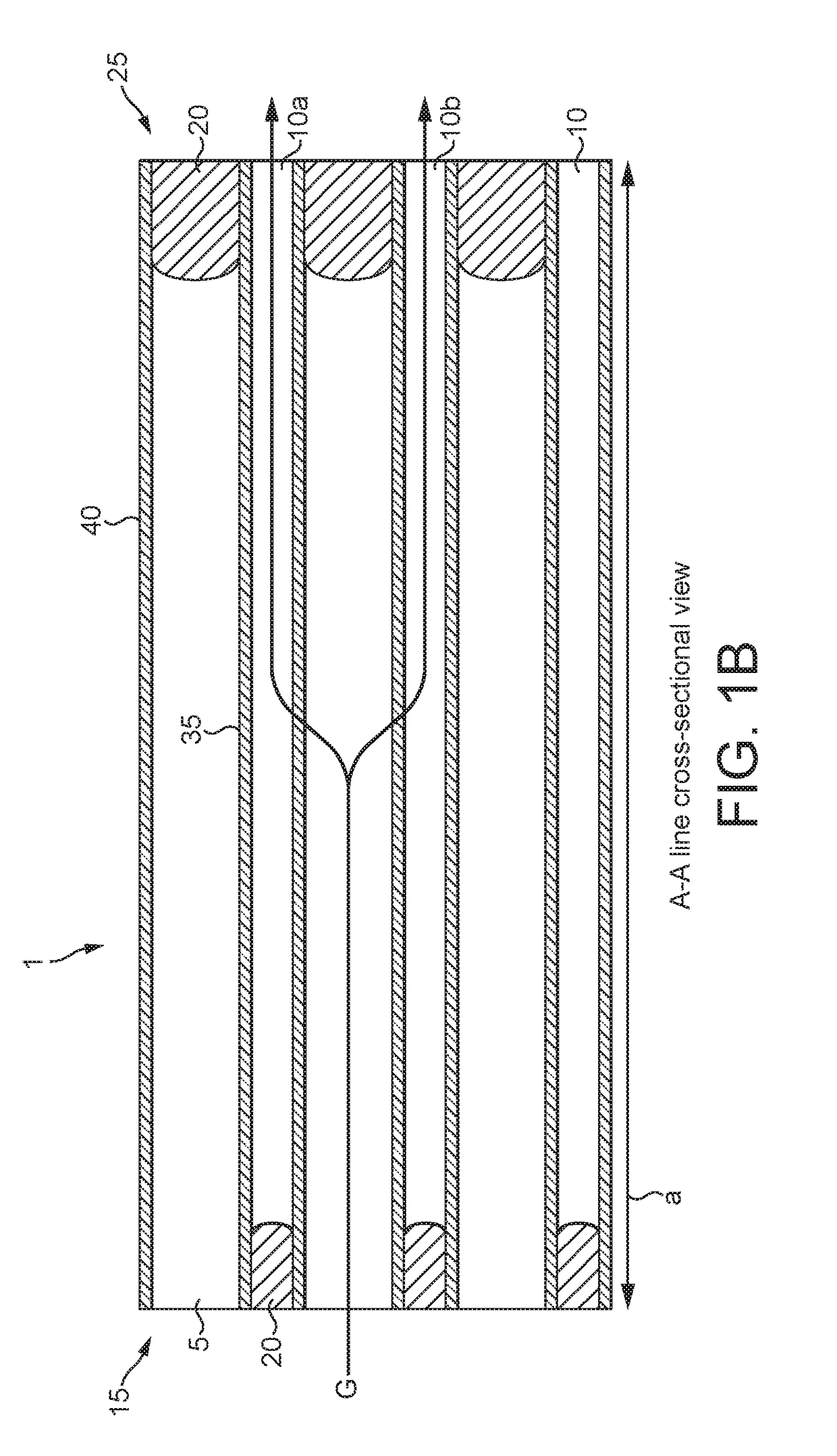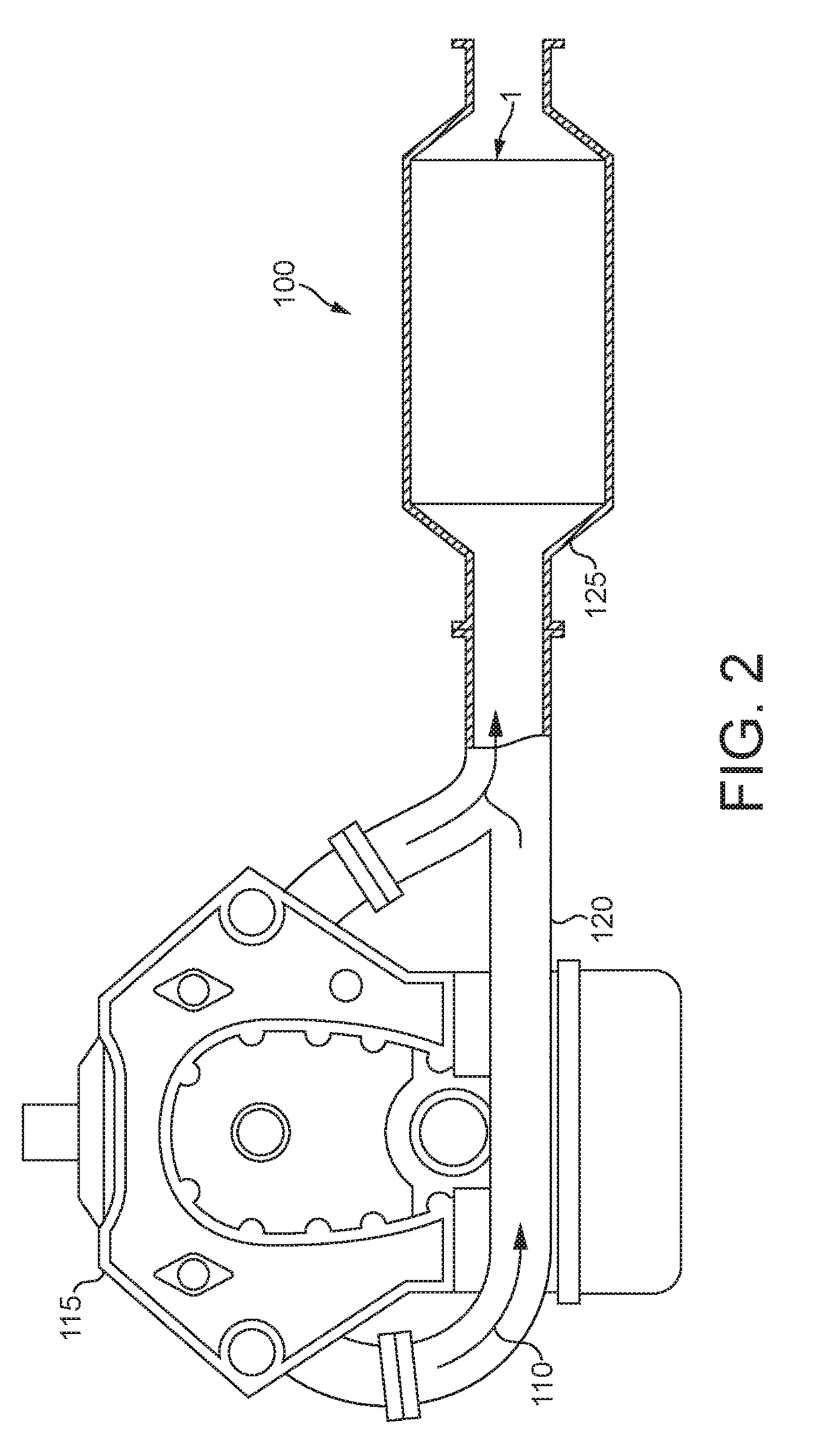Gasoline particulate filter
a technology of particulate filter and gasoline engine, which is applied in the direction of physical/chemical process catalyst, separation process, human health protection, etc., can solve the problems of generating particulates, particulate emissions, and treatment systems for gasoline engines that are not suitable for achieving the proposed particulate matter standard, so as to prevent the deactivation of rhodium and avoid process complexity. , the effect of high back pressur
- Summary
- Abstract
- Description
- Claims
- Application Information
AI Technical Summary
Benefits of technology
Problems solved by technology
Method used
Image
Examples
example 2
[0116]Four wall-flow filters (4.66×4.5″ and 300 / 8 cell density) were coated with TWCs having PGM 60 / 0.57:3. Each TWC comprised a different weight ratio of Al2O3 to CeZrO4. The coated filters were calcined and aged (Hydrothermal, 1100° C. in air with 10% H2O added, 5 h).
[0117]Using a 1.41 GTDI test engine, the NOx emissions were measured based on a standard engine test. The results were as follows:
Al2O3:CeZrO4 wt ratio1:11:21:32:1Vehicle NOx Emissions (g / km)0.0580.0460.040.054Relative NOx Emissions145.0%115.0%100.0%135.0%
[0118]As can be seen from the table, as the CeZrO4:Al2O3 wt ratio increased from 1:2 to 3:1, the relative NOx emissions decreased.
example 3
[0119]Three wall-flow filters (4.66×4.5″ and 300 / 8 cell density) were coated with TWCs having PGM 22 / 0:20:2. Each TWC comprised a different weight ratio of Al2O3 to CeZrO4. The coated filters were calcined and aged as in Example 2.
[0120]Using a 2.0l GTDI Engine Bench test engine, the NOx emissions were measured based on a standard engine test. The results were as follows:
Al2O3:CeZrO4 wt ratio1:31:41:5NOx conversion at lambda 144.846.0544.78
[0121]To coat the wall flow filters with the TWC composition, porous substrates are immersed vertically in a portion of the catalyst slurry such that the top of the substrate is located just above the surface of the slurry. In this manner slurry contacts the inlet face of each honeycomb wall, but is prevented from contacting the outlet face of each wall. The sample is left in the slurry for about 30 seconds. The filter is removed from the slurry, and excess slurry is removed from the wall flow filter first by allowing it to drain from the channels...
example 4
ustion Tests
[0123]Two ceria-zirconia mixed oxides each doped with rare earth elements and having the composition shown in the Table below were tested for their soot combustion activity using a CATLAB-PCS combined microreactor and mass spectrometer laboratory apparatus (Hiden Analytical). A cordierite sample was tested as a control. The ceria-zirconia mixed oxides and the cordierite control were pre-fired at 500° C. for 2 hours.
[0124]Soot was collected from the engine of a European common rail light-duty diesel 2.2 litre capacity engine, which was certified to meet Euro IV emission standards. The exhaust system included a commercially available soot filter comprising an aluminium titanate wallflow filter. Soot was collected on the filter and the soot was removed from the filter by directing compressed air from a gun through the outlet channels of the filter.
[0125]To prepare the samples, 85 mg of each sample or cordierite was mixed with 15 mg of the soot using a pestle and mortar unti...
PUM
| Property | Measurement | Unit |
|---|---|---|
| Thickness | aaaaa | aaaaa |
| Thickness | aaaaa | aaaaa |
| Fraction | aaaaa | aaaaa |
Abstract
Description
Claims
Application Information
 Login to View More
Login to View More - R&D
- Intellectual Property
- Life Sciences
- Materials
- Tech Scout
- Unparalleled Data Quality
- Higher Quality Content
- 60% Fewer Hallucinations
Browse by: Latest US Patents, China's latest patents, Technical Efficacy Thesaurus, Application Domain, Technology Topic, Popular Technical Reports.
© 2025 PatSnap. All rights reserved.Legal|Privacy policy|Modern Slavery Act Transparency Statement|Sitemap|About US| Contact US: help@patsnap.com



